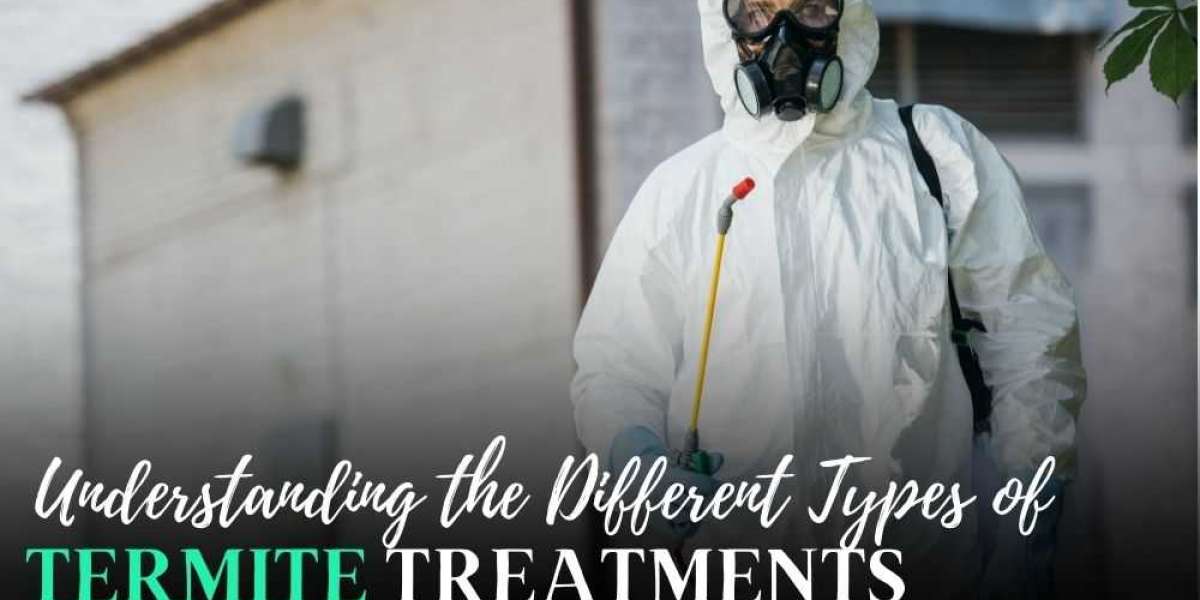Termites are notorious for causing severe damage to homes, often without the homeowner even realizing it until it’s too late. These "silent destroyers" feast on wood and other cellulose-based materials, weakening the structure of your home, furniture, and belongings. When faced with a termite infestation, one of the most important decisions homeowners will have to make is choosing the right termite treatment. With a variety of options available, understanding the different treatments and their benefits will help you determine which one is the best for your home. This comprehensive guide explores the various termite treatment methods to help you make an informed decision.
1. Liquid Termiticides: A Barrier Against Termites
Liquid termiticides are one of the most widely used treatments to protect homes from termites. These chemicals are applied to the soil around the foundation of the home to create a barrier that repels and kills termites. When termites come into contact with the treated soil, they ingest or absorb the chemicals, which disrupt their ability to feed and reproduce, eventually leading to their death.
How It Works:
- Liquid termiticides are typically applied to the perimeter of a home, including areas where the foundation meets the soil.
- The treatment is designed to either kill termites or repel them, preventing them from entering the home.
- The chemicals used in liquid termiticides are usually long-lasting, providing ongoing protection for several years.
Types of Liquid Termiticides:
- Repellent Termiticides: These form a barrier that repels termites away from the structure. While effective at keeping termites out, repellent treatments may not affect termites that are already inside the home.
- Non-repellent Termiticides: These allow termites to pass through the treated area without being repelled, but the chemicals they ingest or come into contact with will kill them. Non-repellent termiticides are considered more effective at eliminating termites inside the structure and creating long-term protection.
Pros:
- Provides long-lasting protection when applied correctly.
- Effective for homes with existing termite problems or for preventative treatment.
- Can be applied around the perimeter and under foundations.
Cons:
- Requires professional application, as it involves trenching around the foundation and applying chemicals to the soil.
- May require reapplication after a few years.
2. Termite Baiting Systems: Luring Termites to Their Doom
Termite baiting systems are another popular form of treatment that can be effective in both managing active infestations and preventing future problems. These systems involve placing bait stations around the perimeter of the home or in areas with visible termite activity. The bait stations contain cellulose-based material laced with a slow-acting poison that attracts termites. As the termites consume the bait, they carry the poison back to the colony, ultimately killing the entire infestation.
How It Works:
- Bait stations are installed in the ground around the home or placed in areas where termite activity has been observed.
- The termites feed on the bait and take it back to the colony, where it spreads to other termites.
- The bait works slowly, so it doesn’t kill the termites immediately. Instead, it allows the poison to affect the entire colony over time.
Pros:
- Less invasive than liquid treatments, as there’s no need to dig trenches or treat the soil.
- Can be used both for active infestations and as a preventive measure.
- Effective in eliminating entire termite colonies, including those in difficult-to-reach areas.
Cons:
- Takes longer to see results compared to liquid treatments, as the poison works gradually.
- Requires regular monitoring and maintenance to ensure the bait stations remain active and effective.
- While it’s effective at eliminating termite colonies, it may not offer the same immediate protection as liquid termiticides.
3. Fumigation: A Whole-Home Solution for Severe Infestations
Fumigation, also known as tenting, is one of the most intensive and thorough termite treatment options available. It involves sealing the entire home in a tent and then releasing a fumigant gas inside the structure. The fumigant penetrates every part of the home, including wooden beams, furniture, and even walls, killing termites and other pests hiding within the home.
How It Works:
- The home is covered with a large tarp or tent, and the fumigant gas is released inside.
- The gas permeates the entire structure, reaching every part of the home, and kills the termites on contact.
- Once the fumigation process is complete, the gas dissipates, and the home is ventilated to ensure it's safe to re-enter.
Pros:
- Highly effective for treating severe or widespread termite infestations, especially when other methods haven’t worked.
- Provides a thorough treatment that reaches all areas of the home, including hidden spaces.
- Can be used for homes with inaccessible areas or extensive damage.
Cons:
- Requires the homeowner to vacate the property during the treatment, which typically lasts for 1-3 days.
- Fumigation can be expensive, especially for larger homes.
- Requires professional expertise for safe and proper execution.
4. Borate Treatments: A Chemical Shield for Wood
Borate-based treatments are used as both a preventive and curative solution for termite control. Borate is a naturally occurring mineral that is toxic to termites but relatively safe for humans and pets. This treatment involves applying a borate solution directly to wooden structures in and around the home.
How It Works:
- A borate solution is applied directly to the wood, either by spraying, brushing, or soaking.
- The borate penetrates the wood and acts as both a repellent and a toxic agent, killing termites that come into contact with it.
- Once applied, the treatment creates a long-lasting barrier that prevents termites from infesting the wood.
Pros:
- Non-toxic and eco-friendly, making it safe for pets and humans.
- Can be applied to wooden furniture, beams, and other wooden structures inside the home.
- Effective as a preventive treatment, as well as for killing termites in wood that’s already been infested.
Cons:
- Works only on exposed wood and does not treat soil or areas outside the home.
- May not be effective for large-scale infestations or homes with extensive termite damage.
5. Natural and Organic Treatments: Eco-Friendly Alternatives
For homeowners looking for more eco-friendly options, several natural and organic treatments are available. These treatments use natural substances to repel or kill termites without the use of harmful chemicals. Common natural treatments include:
- Orange Oil: Derived from the peel of oranges, this oil contains d-limonene, a compound that is toxic to termites. Orange oil can be injected directly into infested wood or sprayed on wooden surfaces.
- Nematodes: Beneficial nematodes are microscopic worms that parasitize and kill termites. These can be applied to the soil around the foundation of the home.
Pros:
- Environmentally friendly and safe for humans and pets.
- Effective in treating smaller, localized infestations.
Cons:
- Not as effective for large infestations or widespread termite problems.
- May require more frequent reapplication compared to chemical treatments.
Choosing the Right Treatment for Your Home
The best termite treatment for your home depends on several factors, including the size of the infestation, the type of property, your budget, and your environmental preferences. Here are some guidelines to help you choose the right solution:
- For Preventative Measures: Liquid termiticides or baiting systems are ideal for homes looking to prevent termite problems before they start.
- For Active Infestations: If you have a moderate to severe infestation, fumigation or liquid termiticides may be the most effective solution.
- For Eco-Friendly Options: Borate treatments, orange oil, and nematodes are great alternatives for homeowners seeking natural solutions.
In many cases, a combination of treatments, such as liquid termiticides for a perimeter barrier and baiting systems for ongoing monitoring, can offer the most comprehensive protection.
Conclusion
Choosing the right termite treatment is crucial in safeguarding your home from the destructive force of termites. Whether you opt for liquid termiticides, baiting systems, fumigation, or natural treatments, it’s important to consult with a pest control professional to assess your home’s needs. By understanding the different options available, you can make an informed decision that ensures the long-term safety and integrity of your home.
The Pest and Termite Co. offers comprehensive termite solutions, including termite barrier installation, termite inspections, and effective treatment services to safeguard your home. Their expert team ensures long-lasting protection against termite infestations.



